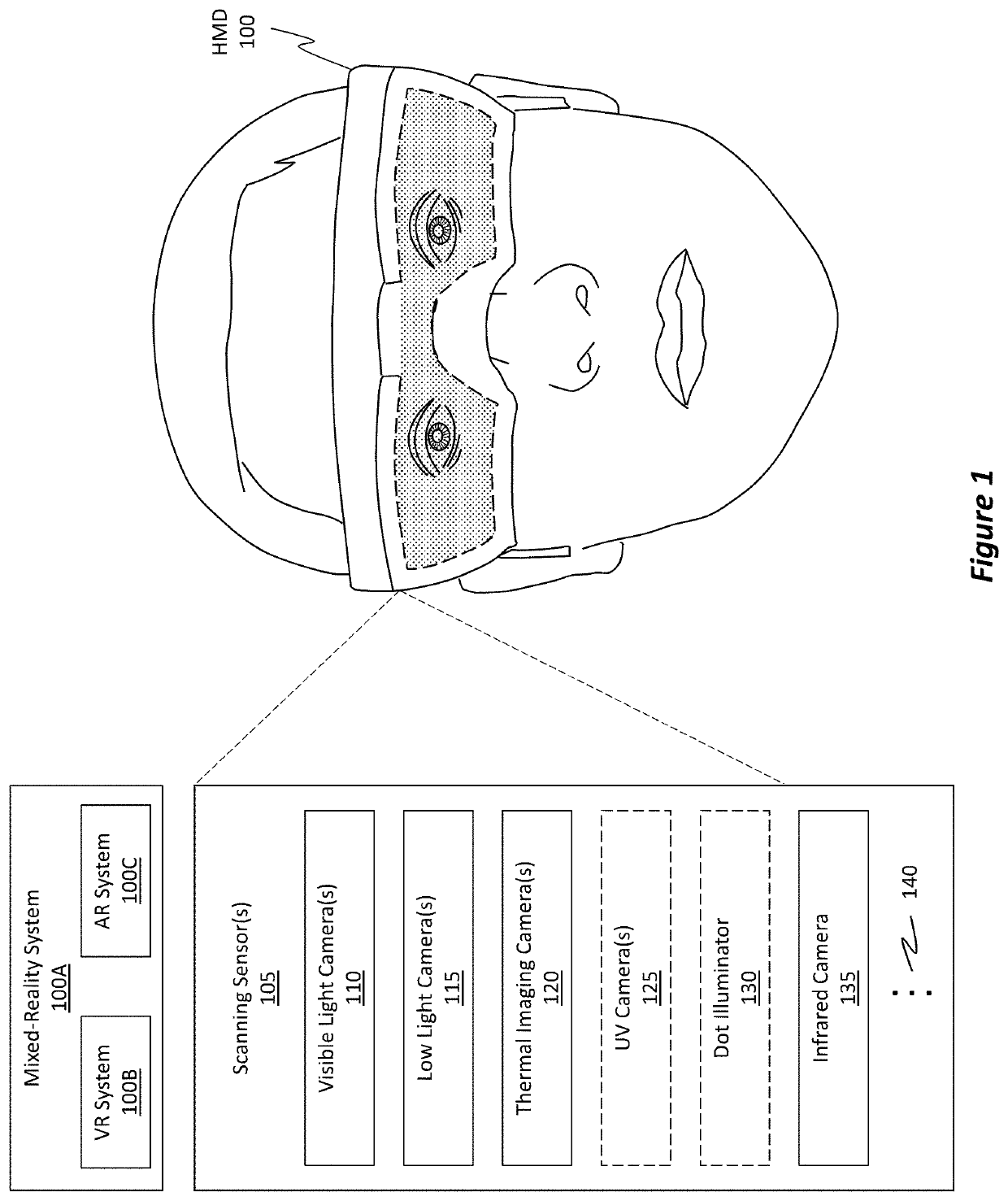Low motion to photon latency rapid target acquisition
a technology of low motion and target acquisition, applied in the field of low motion to photon latency rapid target acquisition, can solve the problems of affecting the user, affecting the user's experience, so as to achieve the effect of reducing the latency
- Summary
- Abstract
- Description
- Claims
- Application Information
AI Technical Summary
Benefits of technology
Problems solved by technology
Method used
Image
Examples
Embodiment Construction
[0035]Embodiments disclosed herein relate to systems, devices (e.g., wearable devices, hardware storage devices, etc.), and methods that update a position of overlaid image content using inertial measurement unit (IMU) data to reflect subsequent changes in camera positions to minimize latency effects. As used herein, a “system camera” refers to an integrated camera that is a part of an HMD. An “external camera” is a camera that is detached from or that is separated from the HMD. An example of an external camera can be a camera mounted on a tool used by a user who is also wearing an HMD.
[0036]In some embodiments, a system camera and an external camera generate images. These images are overlaid on one another and aligned to form an overlaid image. Content from the external camera image is surrounded by a bounding element in the overlaid image. IMU data associated with both the system camera and the external camera is obtained. Based on that IMU data, the embodiments determine an amoun...
PUM
 Login to View More
Login to View More Abstract
Description
Claims
Application Information
 Login to View More
Login to View More - R&D
- Intellectual Property
- Life Sciences
- Materials
- Tech Scout
- Unparalleled Data Quality
- Higher Quality Content
- 60% Fewer Hallucinations
Browse by: Latest US Patents, China's latest patents, Technical Efficacy Thesaurus, Application Domain, Technology Topic, Popular Technical Reports.
© 2025 PatSnap. All rights reserved.Legal|Privacy policy|Modern Slavery Act Transparency Statement|Sitemap|About US| Contact US: help@patsnap.com



